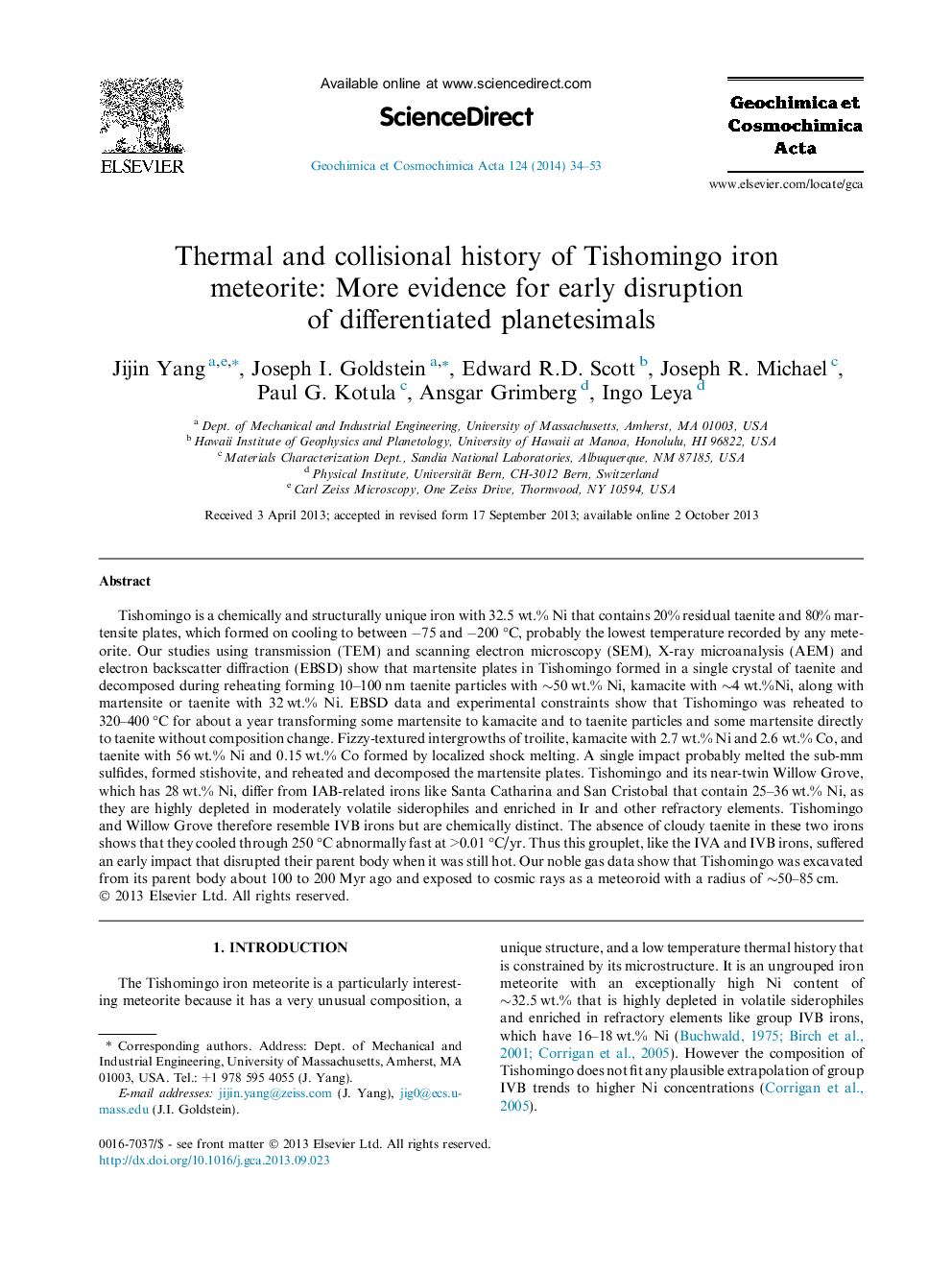| Article ID | Journal | Published Year | Pages | File Type |
|---|---|---|---|---|
| 6438855 | Geochimica et Cosmochimica Acta | 2014 | 20 Pages |
Abstract
Tishomingo is a chemically and structurally unique iron with 32.5 wt.% Ni that contains 20% residual taenite and 80% martensite plates, which formed on cooling to between â75 and â200 °C, probably the lowest temperature recorded by any meteorite. Our studies using transmission (TEM) and scanning electron microscopy (SEM), X-ray microanalysis (AEM) and electron backscatter diffraction (EBSD) show that martensite plates in Tishomingo formed in a single crystal of taenite and decomposed during reheating forming 10-100 nm taenite particles with â¼50 wt.% Ni, kamacite with â¼4 wt.%Ni, along with martensite or taenite with 32 wt.% Ni. EBSD data and experimental constraints show that Tishomingo was reheated to 320-400 °C for about a year transforming some martensite to kamacite and to taenite particles and some martensite directly to taenite without composition change. Fizzy-textured intergrowths of troilite, kamacite with 2.7 wt.% Ni and 2.6 wt.% Co, and taenite with 56 wt.% Ni and 0.15 wt.% Co formed by localized shock melting. A single impact probably melted the sub-mm sulfides, formed stishovite, and reheated and decomposed the martensite plates. Tishomingo and its near-twin Willow Grove, which has 28 wt.% Ni, differ from IAB-related irons like Santa Catharina and San Cristobal that contain 25-36 wt.% Ni, as they are highly depleted in moderately volatile siderophiles and enriched in Ir and other refractory elements. Tishomingo and Willow Grove therefore resemble IVB irons but are chemically distinct. The absence of cloudy taenite in these two irons shows that they cooled through 250 °C abnormally fast at >0.01 °C/yr. Thus this grouplet, like the IVA and IVB irons, suffered an early impact that disrupted their parent body when it was still hot. Our noble gas data show that Tishomingo was excavated from its parent body about 100 to 200 Myr ago and exposed to cosmic rays as a meteoroid with a radius of â¼50-85 cm.
Related Topics
Physical Sciences and Engineering
Earth and Planetary Sciences
Geochemistry and Petrology
Authors
Jijin Yang, Joseph I. Goldstein, Edward R.D. Scott, Joseph R. Michael, Paul G. Kotula, Ansgar Grimberg, Ingo Leya,
